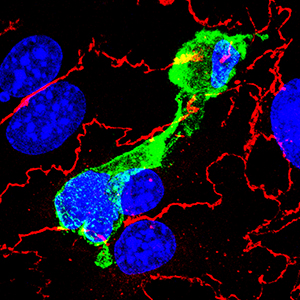Our newest publication is out in Cell Reports. We showed that Th17 and Th1 lymphocytes use different mechanisms to cross the blood-brain barrier – and cause disease – in animal models of multiple sclerosis. Surprisingly, a majority of Th1 cells actually squeeze through the endothelial cell cytoplasm instead of going through gaps between cells. This process requires endothelial caveolae. Part of the agenda for the Lutz lab is building upon these findings for new ways to therapeutically block or enhance blood-brain barrier permeability. A second surprising finding was that caveolae are not involved in the internalization and destruction of large tight junction segments in the living blood-brain barrier.
This work was done during my post-doctoral training in the lab of Dr. Dritan Agalliu at Columbia University Medical Center, with significant guidance on intravital two-photon microscopy from Dr. Sunil Gandhi at University of California, Irvine. Thanks to excellent collaborators Julian Smith, Dae Hwan (Glenn) Kim, Carl Olson, Kyle Ellefsen, and Jennifer Bates.
Full text can be viewed at the Cell Reports website: http://www.cell.com/cell-reports/fulltext/S2211-1247(17)31574-7
